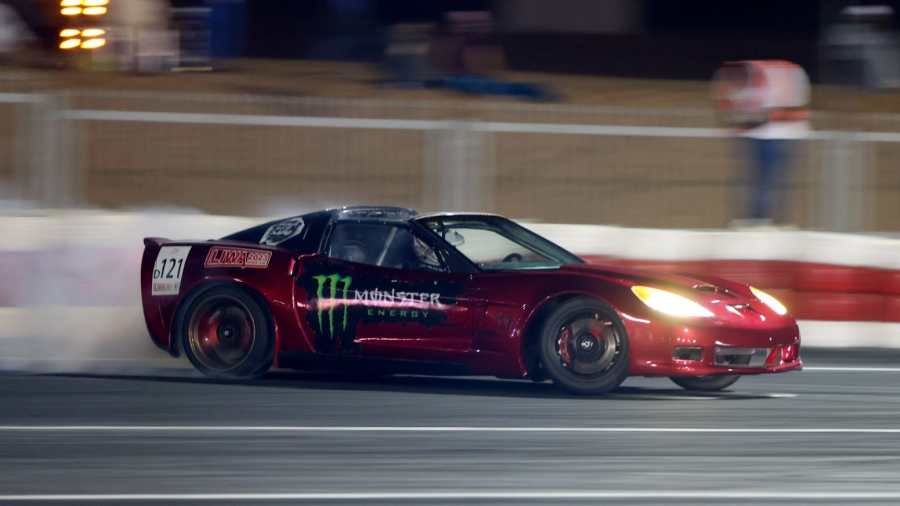Drifting is a driving technique that involves intentional oversteering and loss of traction while maintaining control and maneuvering the car through corners and turns. It entails creating a rear slip angle that exceeds the front slip angle, often resulting in the front wheels pointing in the opposite direction to the turn, a technique known as opposite lock or counter-steering. Drifting is traditionally executed through clutch kicking, deliberate oversteering, and counter steering. It is important to note that drifting differs from the four-wheel drift, a cornering technique used in Grand Prix and sports car racing.

Car Drifting Origins
Drifting was first practiced in Europe before the 1950s and gained popularity in Japan in the 1970s. Italian driver Tazio Nuvolari is credited as the inventor of the four-wheel drift, as acknowledged by automotive icon Enzo Ferrari.
British racing driver Stirling Moss further refined the technique by mastering drifting through curves in Formula 1 races, using the accelerator pedal for steering.
Drifting as a specialized competition gained prominence in the Japan Touring Car Championship races. Kunimitsu Takahashi, a renowned motorcyclist turned driver, played a pivotal role in developing drifting techniques during the 1970s, delighting spectators with his tire-smoking performances.

Car Drifting Competitions
Leading the way in this motorsport are events such as IDCR, the D1 Grand Prix in Japan, and others like Drift Games Extreme, Formula D, Drift Allstars, King of Europe, Drift Masters, British Drift Championship, WDS, RDS, Formula Drift Asia, NZ Drift Series, Australian Drifting Grand Prix, Spec-D Drift Series, Emirati Liwa International Festival Drift Race and, the Greek Drift Championship (Drift Wars).
Typically, competitions consist of two sessions: a qualifying or practice session and a final session. During the qualifying session, referred to as “solo runs” or “tansō,” drivers make individual passes in front of judges to secure a spot in the final 16. The finals consist of tandem passes called “chases” or “tsuisō,” where drivers are paired off, taking turns to lead. The best drivers from each heat progress to the subsequent rounds until a final winner is determined.
When evaluating drifters in competitions, judges focus on specific sections of the circuit that provide good viewing and drifting opportunities, while the rest of the track is less relevant. They typically consider several key factors such as:
- Line: Judges assess the driver’s chosen racing line, a good racing line involves hitting specific clipping points or zones, which are marked areas on the track that drivers must come close to or “clip” with their car. The line should be smooth, precise, and maintain a consistent distance from the marked clipping points.
- Angle: The angle of the drift is crucial in drifting competitions. Judges look for a significant angle of the vehicle relative to the direction of travel. The more extreme the angle while maintaining control, the better. Consistency in maintaining the angle throughout the drift is also important.
- Speed: Judges consider the speed at which the driver enters and exits the drift. A high entry speed with proper control and a smooth transition into the drift is valued. Maintaining good speed throughout the drift and carrying it into the exit without losing control or grip is also essential.
- Style and Showmanship: Drifting is not just about technical skill, judges take into account the overall presentation and flair of the driver. This includes factors such as tire smoke, proximity to obstacles or other cars, initiation techniques, and the ability to perform crowd-pleasing moves or tricks.
- Execution and Fluidity: Judges look for smooth and fluid transitions between maneuvers, corners, and drifts. The driver’s ability to link multiple corners or drifts seamlessly without any significant interruptions or corrections is highly valued. A consistent and controlled performance throughout the run is crucial.
- Impact on Judging Criteria: Judges assess how well the driver fulfills the specific criteria for the competition. Different events may have additional factors or requirements that are considered during evaluation. For example, some competitions may prioritize proximity to other vehicles during tandem drifts or emphasize specific technical skills.
It’s important to note that judging criteria may vary slightly between different drifting competitions and organizations. The specific guidelines and weightage of each factor can be influenced by the rules and objectives of the event.
Car Drifting In Films and TV:
One notable source that contributed to its spread was the Japanese manga and anime series Initial D. Hollywood also played a role in promoting drifting; The Fast and the Furious: Tokyo Drift (2006) that took place in Tokyo and Furious 7 (2015) that took place in Los Angeles, Colorado and Abu Dhabi.
The 2017 film Baby Driver featured an exhilarating chase scene that heavily involved drifting. Ansel Elgort’s character, Baby, skillfully maneuvers a Subaru WRX through intense drifts to evade pursuing police after a bank robbery.
Additionally, the 2019 Netflix television series Hyperdrive capitalized on drifting’s popularity. This reality competition show heavily focused on various driving challenges, including intricate drifting courses. The winner of the series was Diego Higa from Brazil, who exhibited exceptional drifting skills throughout the competition.
Fast and Furious 7 in Abu Dhabi:




